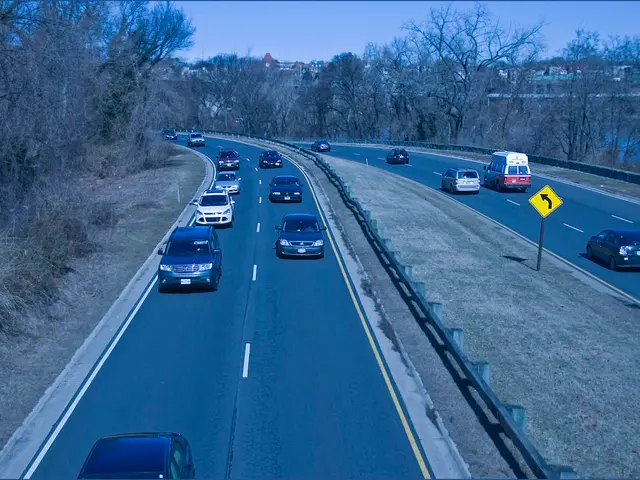Overcrowded Truck Parking Spaces on Motorways: A Persistent Traffic Hazard
Criticism levied against insufficient truck parking areas on highways, highlighting the need for improvement. - Criticism Arises over Excessive Parking Congestion on Motorways
Getting a much-needed rest while on the road can be a luxury for truck drivers in Germany, especially in regions like Saxony and Mecklenburg-Vorpommern. The Auto Club Europa (ACE) has pointed out a critical issue: a significant shortage of truck parking spaces on motorways, posing a considerable risk to traffic.
In a recent control at rest areas, the ACE discovered a high rate of truck overcrowding, particularly on the southern Berlin Ring (A10) and the A24 in Mecklenburg-Vorpommern. At the Oberlausitz Nord rest area on the A4 near Bautzen, the occupancy rate reached a staggering 165%, while the Noethnitzgrund South and North rest areas on the A17 near Dresden showed occupancy rates exceeding 100 and 120%, with more than twice as many trucks than parking spaces.
With the battle for parking spaces beginning as early as 16 or 17 o'clock, Dirk Engelhardt, spokesperson for the Federal Association of Goods Transport, Logistics, and Disposal (BGL), describes the situation as tense. The federal government acknowledges the issue and has been steadily increasing the number of parking spaces since 2018.
The ACE's truck count, though a snapshot, revealed massive truck overcrowding at 31 checked rest areas in eastern Germany, with an overcrowding of around 50%. On 21 of these rest areas, the ACE identified concrete traffic hazards, especially during nighttime with limited visibility, due to trucks parked in entrance and exit lanes or on spaces intended for cars.
The BGL considers the shortage of truck parking spaces to be greater, estimating roughly 40,000 missing spaces. It demands the shortage to become a top priority in the Ministry of Transport. The Federal Ministry of Transport is also working on solutions, planning to introduce telematic parking procedures to make better use of parking areas and add around 3,000 parking spaces since 2018.
Mitigation Strategies
As the government addresses this challenge, various strategies are being pursued:
- Investment in Parking Infrastructure: The German government has earmarked €400 million over the next four years for creating new parking spaces for trucks. This includes allocating €100 million annually for the development of parking facilities[2].
- Compact Parking and Mixed Use: The Ministry of Transport is exploring solutions like "compact parking" and the mixed use of parking spaces. This includes allowing trucks to use passenger car spaces at night[2].
- Telematics-Based Management: There's a focus on using telematics-based methods to manage parking spaces more efficiently, such as real-time information about available spaces[2].
- Mobile Applications and Technology Adoption: The promotion of mobile applications like Transparking can help truckers find available spaces more easily[3].
- Location-Based Solutions: The government is considering using parking spaces outside motorways for trucks, helping distribute demand more evenly[2].
As these measures take effect, it's hoped that the truck parking shortage in Germany, including in regions like Saxony and Mecklenburg-Vorpommern, will be significantly alleviated, ensuring safer journeys for all motorway users.
- Community aid can play a crucial role in facilitating the development of less-favored regions by providing funds for the construction of additional truck parking spaces, aiding in the alleviation of overcrowding on motorways.
- To stimulate economic growth in less-favored regions, finance could be channeled into industries related to the maintenance, management, and improvement of transportation infrastructure, including the construction of more truck parking spaces on motorways.








